When the otter came back to our city in winter of 2021, I was quite exited. It seemed like a messenger at a time of extreme drought.
Around that time I was watching ‘The Mandalorian’, a Star Wars series, and in it many planets are visited. As a spaceship tore through the clouds of a distant planet called Sorgan, piloted by the Mandalorian, the audience of this Star Wars tv-show was treated to an impressive feat of worldbuilding.
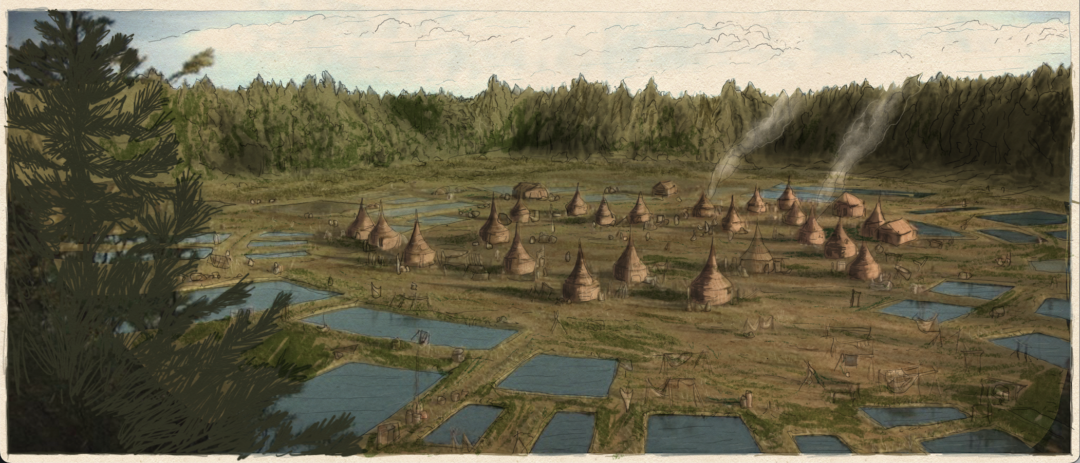
(Planet Sorgan drawing by Theun)
Immediately striking was the bioregional approach through which this world was envisioned; materials, structures, activities, cultural expressions all were directly derived from intimate connections to a swampy, forested biome. It looked as if the design team had taken the swamp and created an entire swamp culture, including means of living for all kinds of creatures, including people, frogs, fish, algue, shrimp and swamp-robots. This – I thought – is ‘otter-world’, in the sense that the otter seemed like it’s totem animal.
Planet Sorgan appeared here – in a way- as an alternate Netherlands, a reimagined Amsterdam, as a total overhaul of what a contemporary human settlement in a wetland-area might look like. This connected in my mind directly to the return of the otter to our city and eventually resulted in otterdam as a floating garden, not a structure made for otters, but a practice inspired by these iconic waterbeings and their kinship relations. To live in a more active relationship with the waters of Amsterdam. Can’t wait to start on a swamp robot!
We gained access to the GGGarden site in May of 2024. We were encouraged by our neighbor art-gardeners de Onkruidenier to be okay with spending a lot of time observing (and not intervening) the first season.
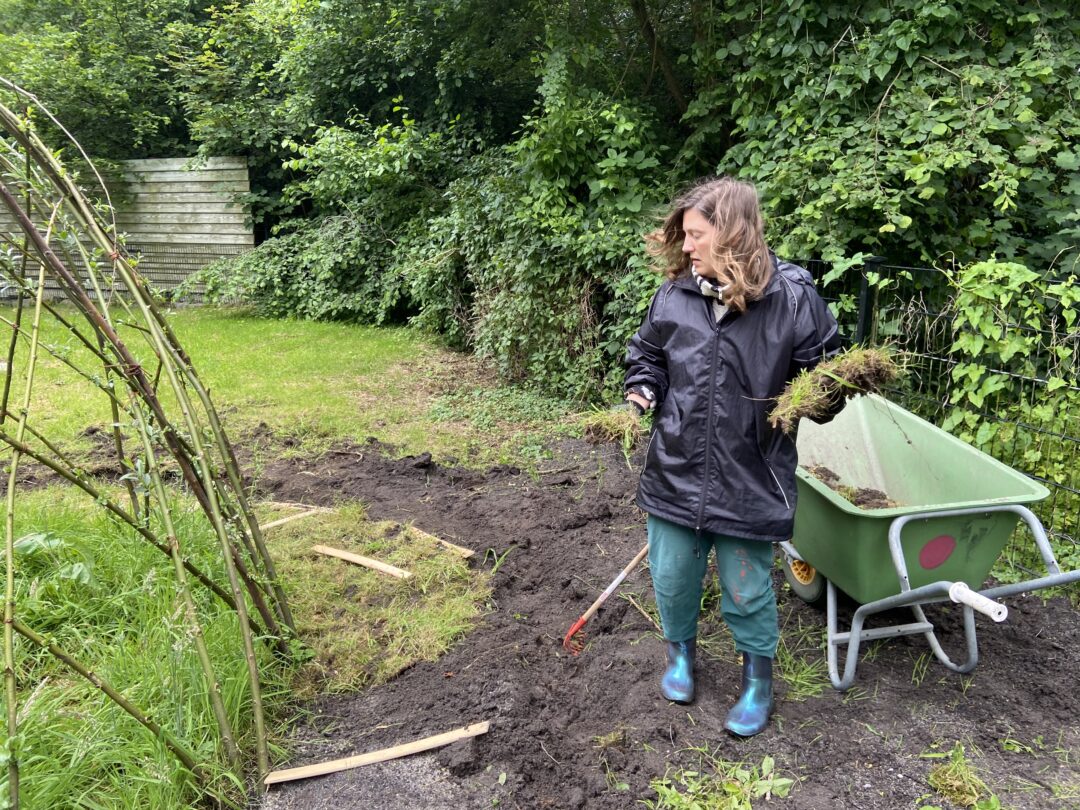
This was good advice, especially since May is a bit late in the growing season to make any extensive plans for going crazy with annuals from seeds or perennials. We decided to put a few plants in the soil, build out some infrastructure (raised beds, a willow dome, etc.) and get to know the conditions, rhythms and patterns of the site.
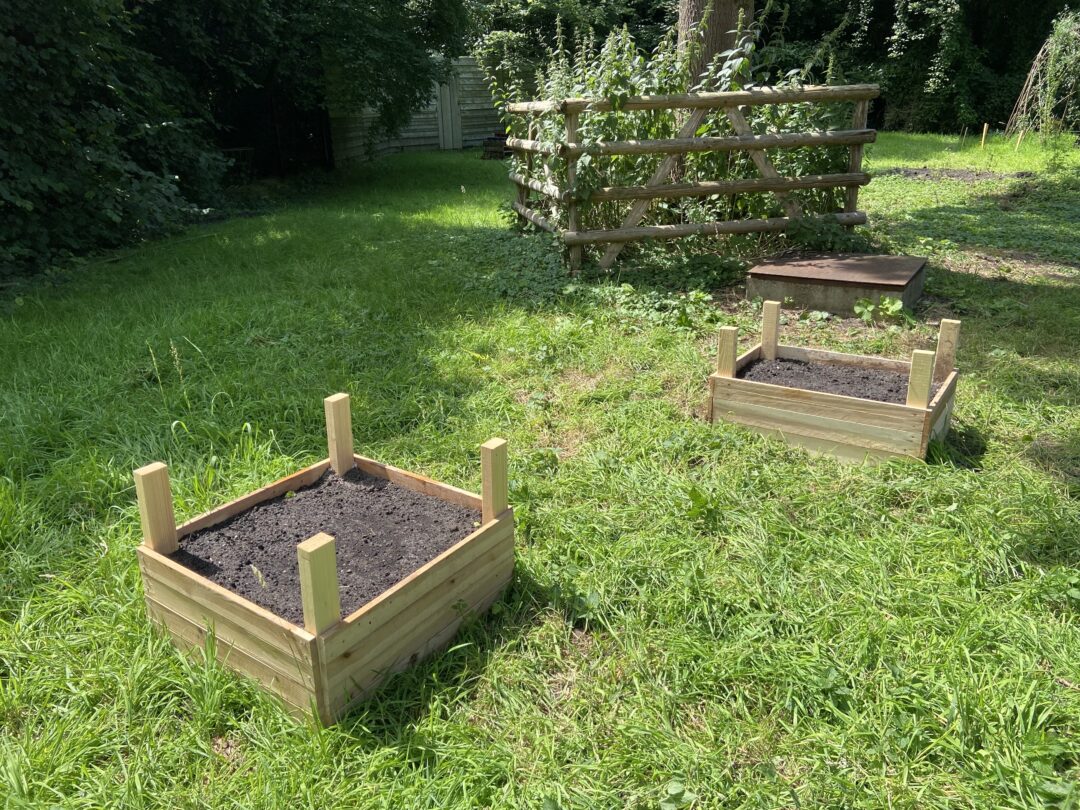
The beans grew well along the fence despite the pretty poor soil conditions, and hopefully their nitrogen fixing is one small step forward for that section of the land.
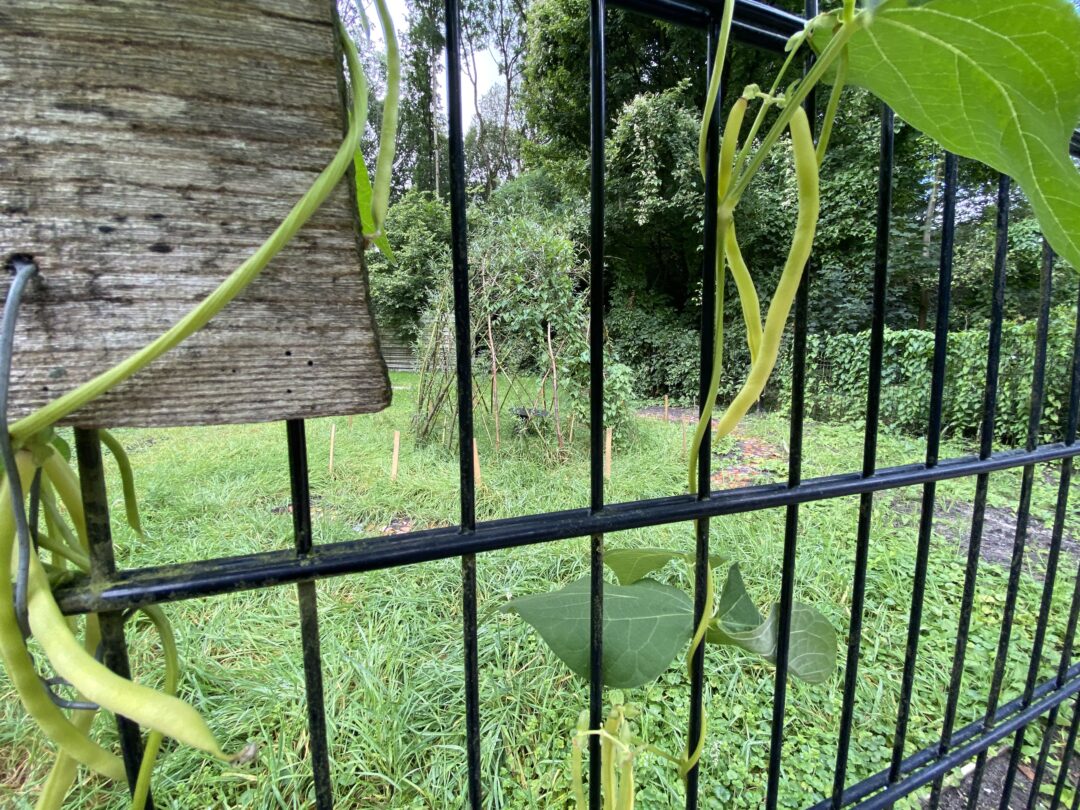
We started to identify the range of volunteer plants that had inhabited what was overall a very marginal site in terms of soil health with lots of recent disturbance. We also started to notice how much plastic there was in the soil, and document that as well.
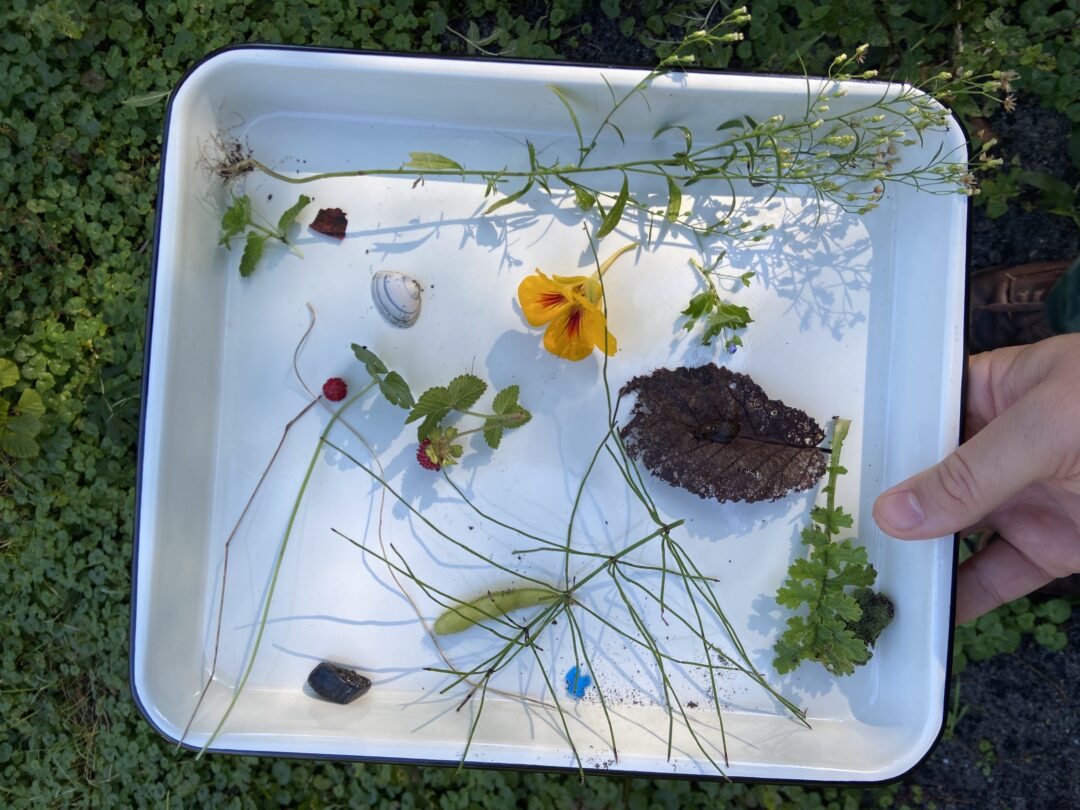
We tidied up the artificial pond early on, and when it warmed up, got to see frogs and salamander and a range of water insects.
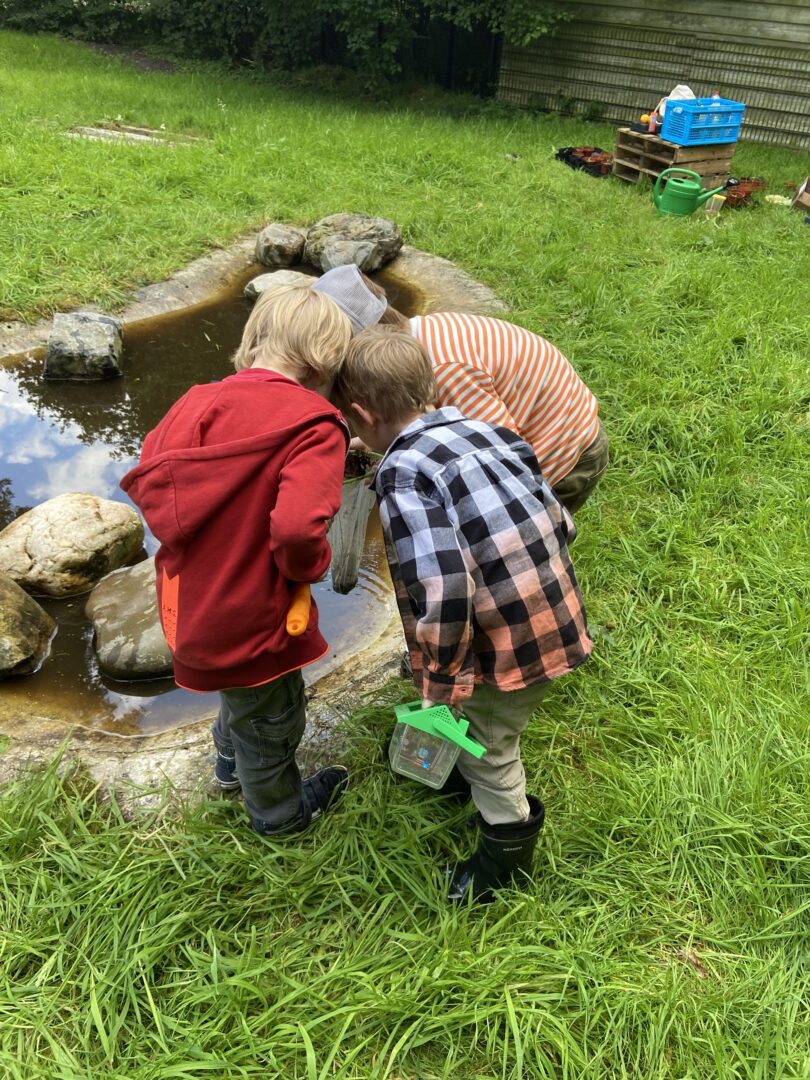
Most of the frogs looked pretty healthy and happy, but last week (THU OCT. 10, 2024) we managed to take a photo and noticed something in or on the frogs mouth. Did the frog manage to find some food or was this some kind of massive growth on its face? Perhaps it was a very small bird hatchling? Otherwise, maybe it was some kind of growth or infection? If anyone knows frogs and can identify this situation, let us know.
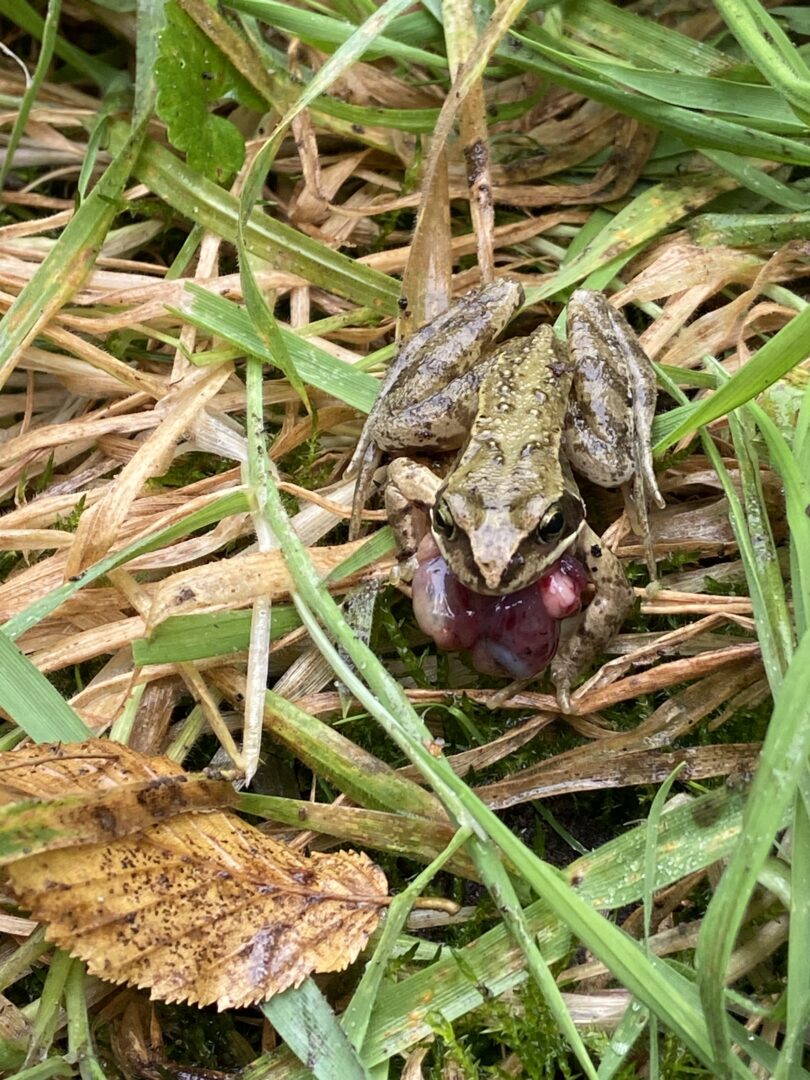
Right around the large tree, and near the treeline in the rear of the site, the soil was slightly richer, but towards the entry the soil consisted of a a lot of white sand and shells, a remnant of its use as a seal enclosure, and possibly because we had heard (unconfirmed) rumors that the initial site infill was dredged from the North Sea.
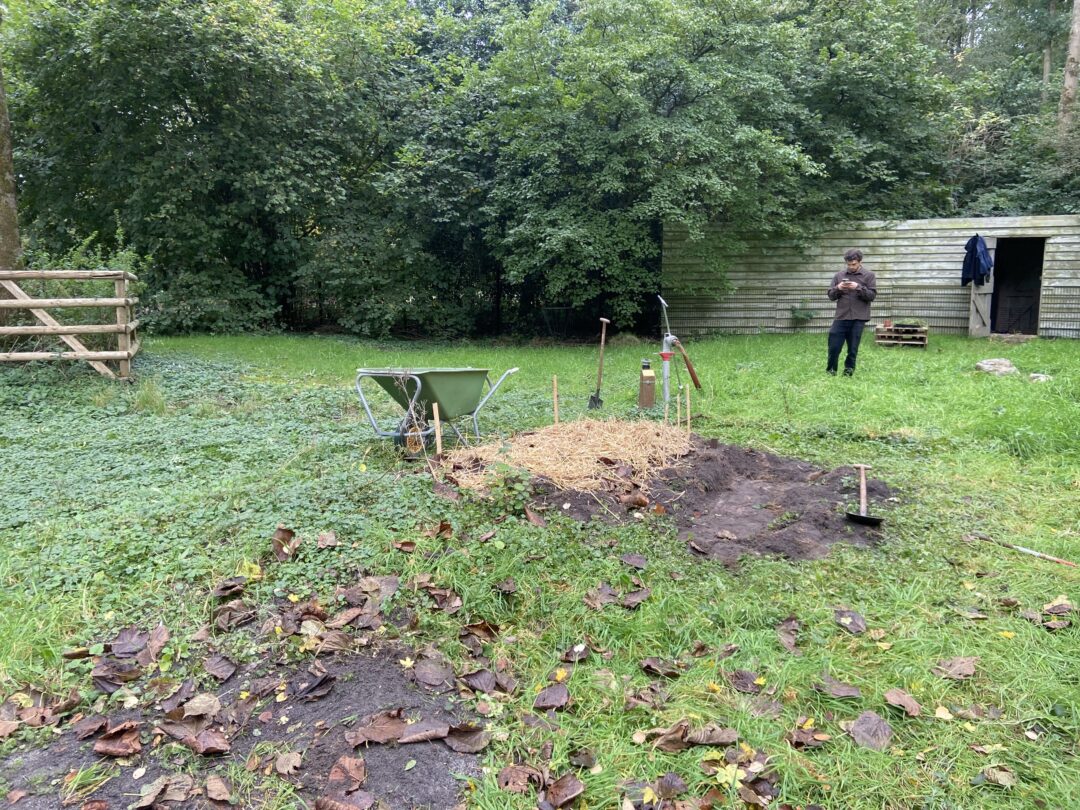
At our most recent public workshop on Saturday Oct. 5, 2024 we did a few kinds of DIY soil testing including using pH paper and counting worms. The site pH was neutral to slightly alkaline. However, much more concerning was the lack of worms and insects in the soil. Two of our test spots yielded no worms, while a third spot had only 1 worm.
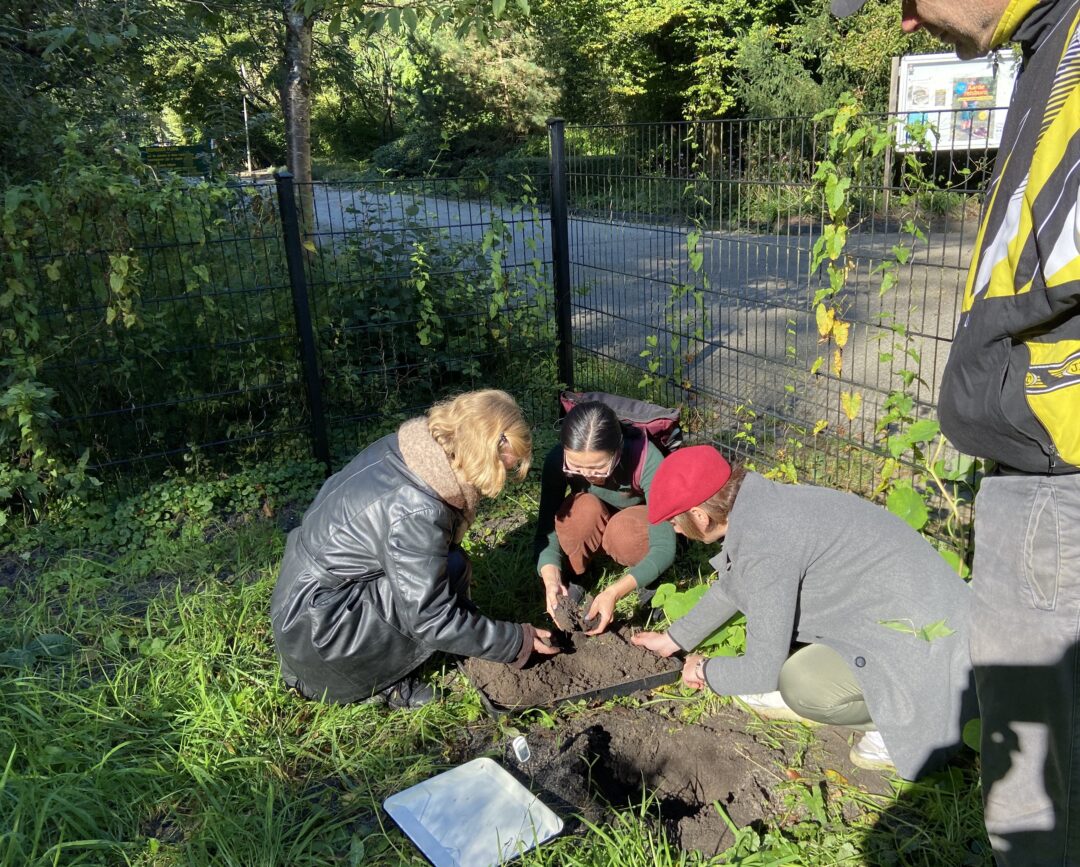
Now that the season is coming to a close, we have begun a process of soil remediation in preparation for next year. In 3 locations we dug trenches, added leaves from offsite and covered this in hay (which was stored in the shed on site), and possibly used by the Wallabies which used to be housed here until 3 years ago.
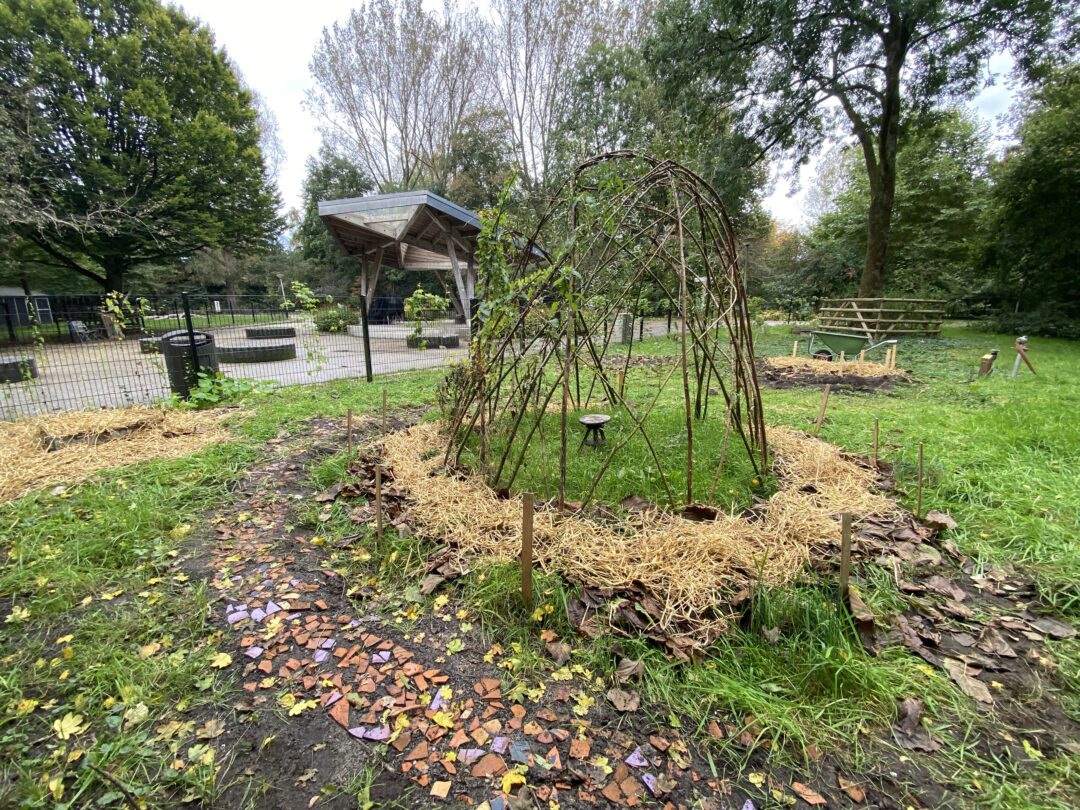
We are also making some plans to plant some cover crops in the new year, and perhaps revisit our research into “Cover Crop Cuisine” that we conducted in Ireland back in 2016.
Lorem ipsum dolor sit amet, consectetur adipiscing elit, sed do eiusmod tempor incididunt ut labore et dolore magna aliqua. Ut enim ad minim veniam, quis nostrud exercitation ullamco laboris nisi ut aliquip ex ea commodo consequat. Duis aute irure dolor in reprehenderit in voluptate velit esse cillum dolore eu fugiat nulla pariatur. Excepteur sint occaecat cupidatat non proident, sunt in culpa qui officia deserunt mollit anim id est laborum.
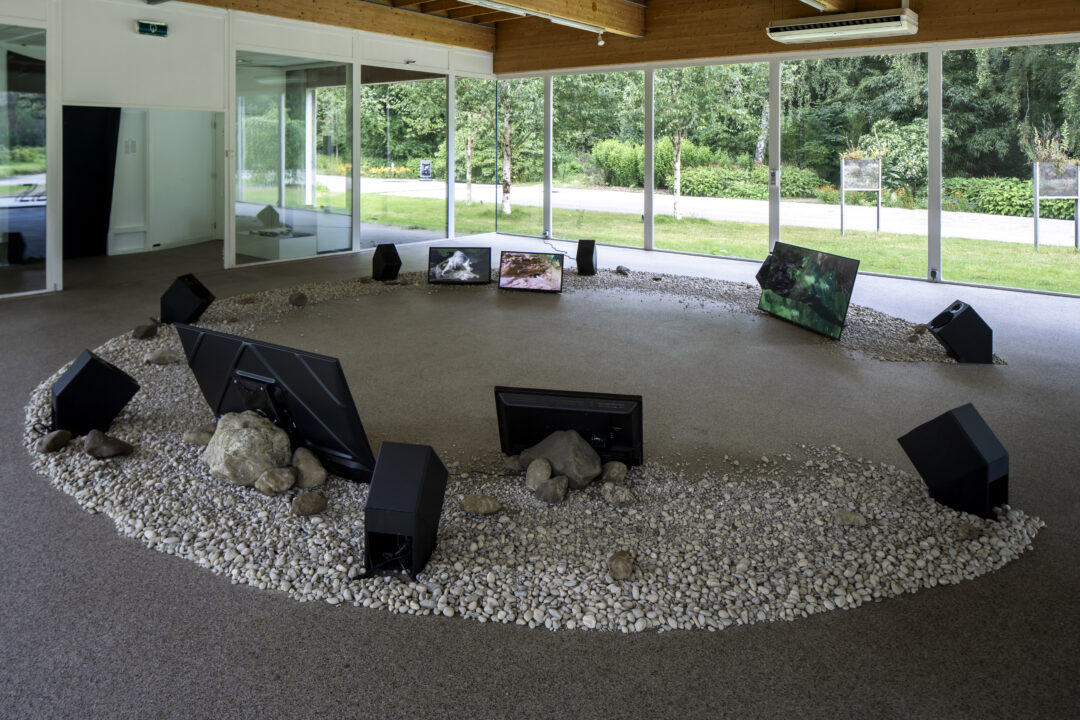
Lorem ipsum dolor sit amet, consectetur adipiscing elit, sed do eiusmod tempor incididunt ut labore et dolore magna aliqua. Ut enim ad minim veniam, quis nostrud exercitation ullamco laboris nisi ut aliquip ex ea commodo consequat. Duis aute irure dolor in reprehenderit in voluptate velit esse cillum dolore eu fugiat nulla pariatur. Excepteur sint occaecat cupidatat non proident, sunt in culpa qui officia deserunt mollit anim id est laborum.
Test post met gekoppelde blog, Lorem ipsum dolor sit amet, consectetur adipiscing elit, sed do eiusmod tempor incididunt ut labore et dolore magna aliqua. Ut enim ad minim veniam, quis nostrud exercitation ullamco laboris nisi ut aliquip ex ea commodo consequat. Duis aute irure dolor in reprehenderit in voluptate velit esse cillum dolore eu fugiat nulla pariatur. Excepteur sint occaecat cupidatat non proident, sunt in culpa qui officia deserunt mollit anim id est laborum.
Same same but different. Another artist-in-residence has begun. No, not just artist-in-residence, but also work: one thing can mean more than one thing. Just as an expat is also an immigrant. But not all migrants are expats.
Starting today, I will be working for three weeks at the Huiberts biologische bloembollen, an organic bulb farmer in the Netherlands. Here, eight Polish women move from Poland to the Netherlands to live and work for eight weeks in the summer. I would have liked to work with them for eight weeks, but because I had an artist-in-residence in Switzerland and also need time to prepare for the ‘Tulip Mania 2’ residency/exhibition at zone2source starting in September, I only work for four weeks.
As the live-in rooms were full, they even provided me with a camper. I am so grateful. The percentage of organic bulbs is said to be 0.22 per cent of the bulb market, but I wonder if 0.22 percent of people have such kindness. I have a feeling that 0.22 per cent would be too low.
What is my question for this artist-in-residence “cum” seasonal labor? I suppose it is: what do I feel when I actually experience the work? In my research so far, I have talked to industrial relations experts about the precarious working conditions of seasonal workers. In Poland, I also heard about the experiences of people who worked in the Netherlands. It is easy to imagine the labour force of seasonal workers being exploited within the economic structure. However, the quality of working conditions varies. In this organic bulb farm, they are given free accommodation and travel, and their wages are above the minimum wage. However, it is a hard job.
I will soon start work at 7.30 in the morning. I am a little worried about whether my body will be able to cope. But if I can’t do this for such a short period, I’m sure I won’t be able to survive. I can’t even evacuate when a disaster happens. People who are forced to move for unavoidable reasons, such as conflict, persecution or disaster – they are also migrants. I live my life thinking, “I will not be like that”. Although the possibility is not zero.
I’m off to work!
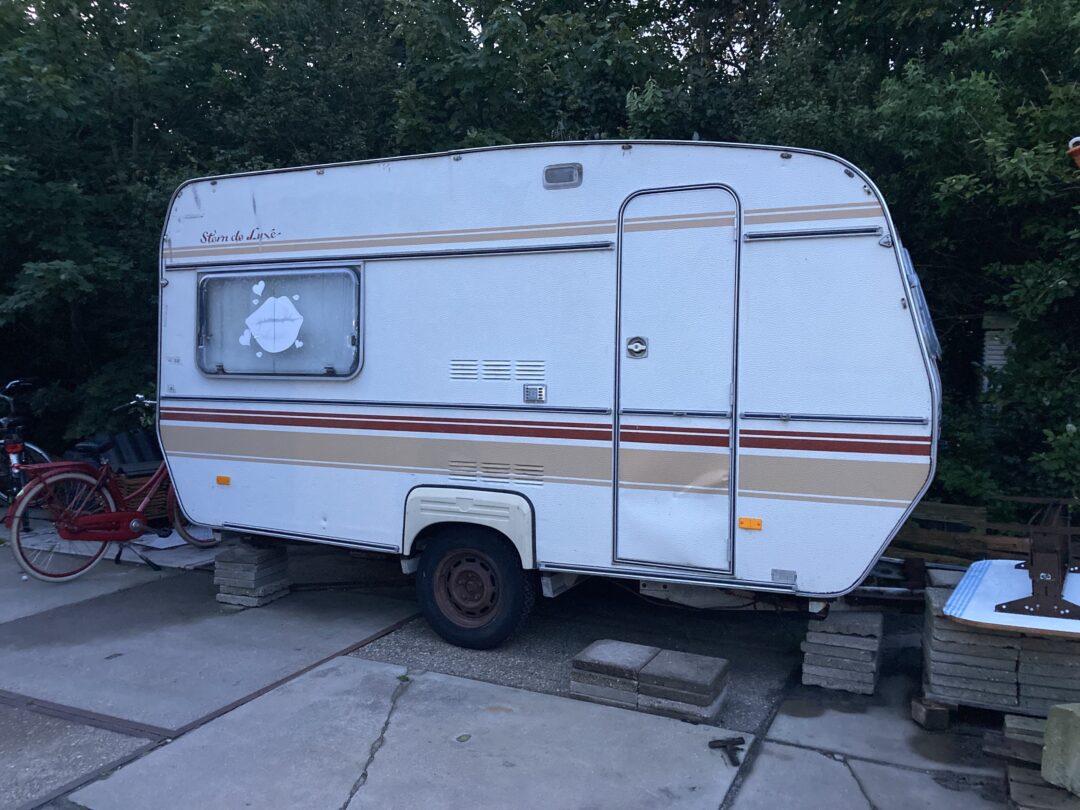
My first day’s work is to weed around the dahlia’s bulbs. I start working at 7.30am with a group of women from Poland who have come to work. The coffee machine in the kitchen is out of order, so around 6am I head to the office kitchen for a coffee, where John, the owner of this organic flower farm, is already sitting at his computer screen.
Rows and rows of dahlia bulbs are planted in the field. It is completely different from the image of an ‘organic flower farmer’ or ‘multi-product’ in Japan: ‘organic’ but ‘high-tech’, multi -product but ‘mass-produced’. This flower farmer grows bulbs for many flowers, not just tulips. Together with colleagues, we pull weeds using a ‘weed-pulling car’. In that car, five people inside and three outside, lying on beds arranged so that they lie face down, pull weeds around the dahlia bulbs.
‘Meditative work, isn’t it?’ My friend told me when I told him that I would work at an organic flower farm. ‘Is it really? I thought. The weed-pulling car moves automatically, but if you are even slightly worried about which weeds are which, you can’t pull the weeds out at the right speed. In the beginning, Brygida and Kasha, who were sitting beside me, showed me how to do it by hand imitation, and within an hour I was used to the work itself.
I have never seen so many ladybirds in one day, and I am grateful to think that these weeds are also free from pesticides and chemicals. The work, concentrating only on pulling weeds, dahlia leaves, soil and ladybirds, was rather meditative, as my friend said. Although my thoughts of telling my friend that it was better than meditating in Thailand or Bali, and that I would recommend it, were shattered in the afternoon…
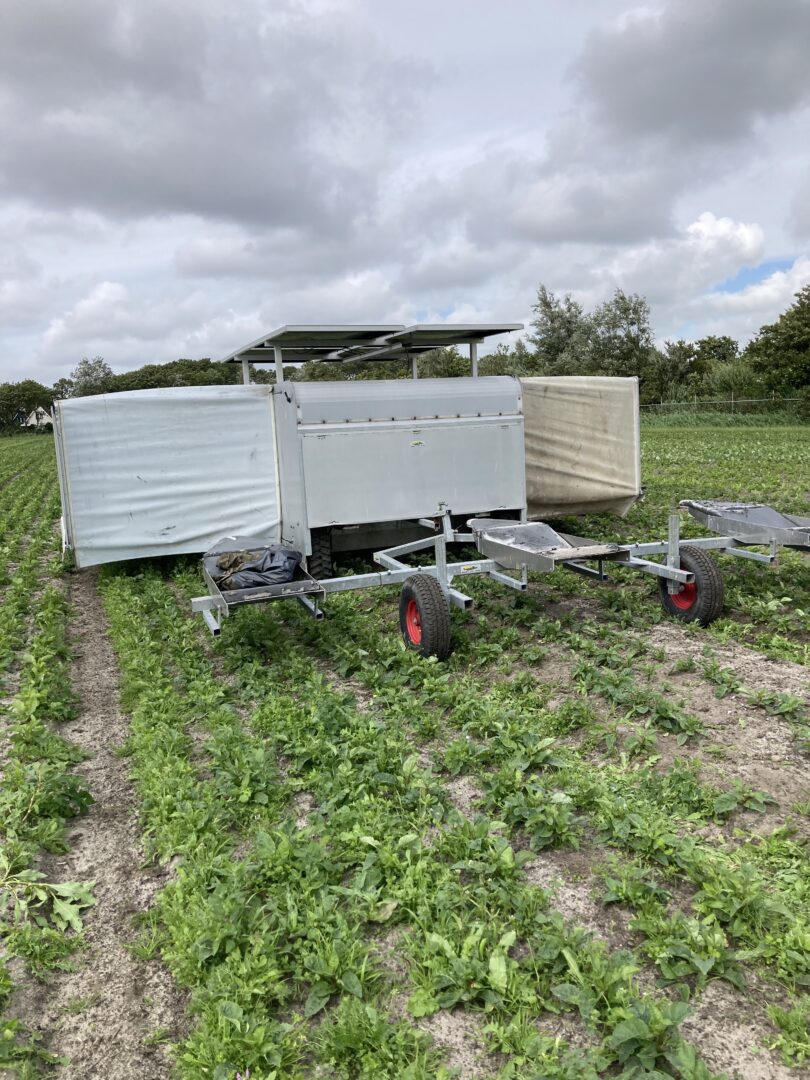
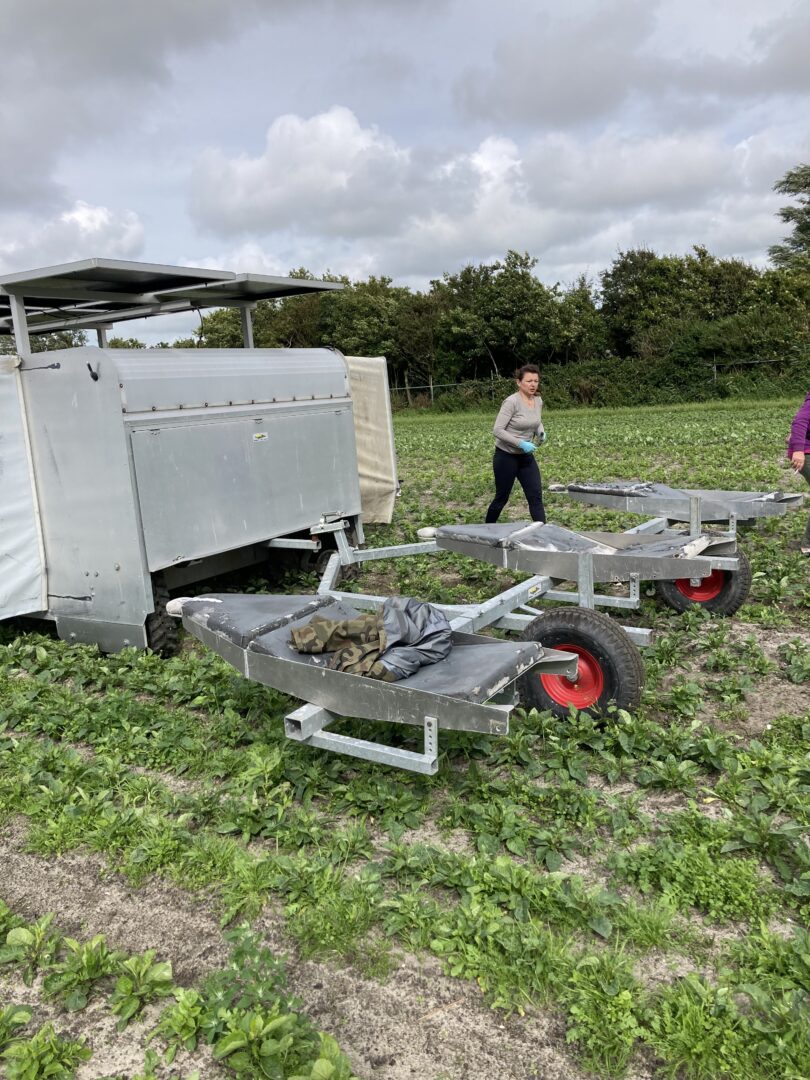
Same same but different. Another artist-in-residence has begun. No, not just artist-in-residence, but also work: one thing can mean more than one thing. Just as an expat is also an immigrant. But not all migrants are expats.
Starting today, I will be working for three weeks at the Huiberts biologische bloembollen, an organic bulb farmer in the Netherlands. Here, eight Polish women move from Poland to the Netherlands to live and work for eight weeks in the summer. I would have liked to work with them for eight weeks, but because I had an artist-in-residence in Switzerland and also need time to prepare for the ‘Tulip Mania 2’ residency/exhibition at zone2source starting in September, I only work for four weeks.
As the live-in rooms were full, they even provided me with a camper. I am so grateful. The percentage of organic bulbs is said to be 0.22 per cent of the bulb market, but I wonder if 0.22 percent of people have such kindness. I have a feeling that 0.22 per cent would be too low.
What is my question for this artist-in-residence “cum” seasonal labor? I suppose it is: what do I feel when I actually experience the work? In my research so far, I have talked to industrial relations experts about the precarious working conditions of seasonal workers. In Poland, I also heard about the experiences of people who worked in the Netherlands. It is easy to imagine the labour force of seasonal workers being exploited within the economic structure. However, the quality of working conditions varies. In this organic bulb farm, they are given free accommodation and travel, and their wages are above the minimum wage. However, it is a hard job.
I will soon start work at 7.30 in the morning. I am a little worried about whether my body will be able to cope. But if I can’t do this for such a short period, I’m sure I won’t be able to survive. I can’t even evacuate when a disaster happens. People who are forced to move for unavoidable reasons, such as conflict, persecution or disaster – they are also migrants. I live my life thinking, “I will not be like that”. Although the possibility is not zero.
I’m off to work!

Begeleid door kunstenaar Debra Solomon produceren deelnemers hun eigen blok eetbare tempeh, die in de Entropical-installatie in 2 dagen zal rijpen. De tempeh kan worden opgehaald op respectievelijk de opening op 13 december en de finissage op 14 februari.
Marlies van Hak in gesprek met Tao G. Vrhovec Sambolec
Luister naar de audio opnamen
Tijdens de finissage van Mind Your Step op 29 november 2020 ging Marlies van Hak (onderzoeker en schrijver) al wandelend in gesprek met Tao. G. Vrhovec Sambolec (SI/NL, kunstenaar), die zich met zijn werk richt op gesitueerde interventies, geluid en de stap. Deze performatieve wandeling is opgenomen en gemonteerd tot een geluidsdocument, dat we hier beschikbaar stellen.
AudiospelerWalking-as-Research focust op wandelen als artistieke en performatieve onderzoekspraktijk, in relatie tot actuele ontwikkelingen in de hedendaagse maatschappij. Al wandelend reflecteren we op de verhouding tussen een bewegend en voelend lichaam, de omgeving en andere lichamen. Onderwerpen die voorbij kunnen komen zijn: wandelen als (gesitueerd) onderzoek / wandelen als niet-weten / welke of wat voor lichamen wandelen? / wie of wat maakt geluid of luistert? / wandelen en geheugen / leemtes, verstoringen, intra-acties / wandelen als relationeel en zintuiglijk / wandelen als protest / hoe documenteer je wandelen als onderzoek?
Een groep van zo’n 20 bezoekers wandelde mee tijdens dit performatieve gesprek in het park, waar de wind in de bomen zomaar een gesprekspartner kon worden en we het onverwachte verwelkomden. Het wandelende gesprek vond plaats met koptelefoons, zodat men ruim afstand kon houden.
Marlies van Hak richt zich in haar onderzoek op de relatie tussen kunst in de publieke ruimte, lichaam, affect en geheugen. Ze schrijft voor TAAK en Buro Ruimte Rondom over wandelen en (collectief) geheugen. Tao G. Vrhovec Sambolec heeft als kunstenaar een specifieke aandacht voor geluid, nieuwe media, real-time interactie en hedendaagse mediatie in relatie tot (lichamelijke) aanwezigheid. Zijn recente werk bestaat uit ruimtelijke installaties en geluidsinstallaties, events en interventies, waarin (on)gemedieerde sonische gebeurtenissen, via affect, de manier bevragen waarop menselijke fysieke aanwezigheid zintuiglijk kan worden gevoeld en tot nieuwe poëtische relaties kan leiden.
Als onderdeel van de Machine Wilderness tentoonstelling waarin vier kunstenaars werken aan de ontwikkeling van nieuwe robots voor het specifieke eco-systeem van het Amstelpark geven zij elk een workshop waarin dieper ingegaan wordt op de projecten en deelnemers actief meewerken aan het ontwikkelen van en experimenteren met de robots. Alle workshops vinden plaats in het Glazen Huis en buiten in het park. De workshops zijn gratis maar een beperkt aantal deelnemers zijn mogelijk. Inschrijven info@zone2source.net
Workshop met Rihard Vitols
Woensdag 23, 16-18 uur
Rihards Vitols werkt van 20 t/m 25he project. Mei in het Amstelpark aan zijn nieuwste robotische project
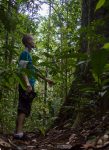
De workshop begint met een presentatie van Rihards Vitols over het project dat hij in het Amstelpark ontwikkelt en toont de diverse fasen van het onderzoek en maakproces door middel van beeld en geluid. Daarna gaan de deelnemers samen met hem op een ‘diep luister’ wandeling door het park, een proces om te leren echt te luisteren naar de natuur om ons heen. We kunnen immers alleen duurzame technologie voor het ecosysteem ontwerpen als we deze ook echt begrijpen door ons ervoor te openen. Deelnemers krijgen een koptelefoon, microfoon en opname instrument mee en werken aan het maken van geluidsinstrumenten. Daarbij toont Rihards hoe hij deze ervaring in zijn werk gebruikt en laat hij zien hoe kennis over dieren kan leiden tot hele andere oplossingen voor milieuproblemen.
Jeugdworkshop Robotica
Ian Ingram en Theun Karelse
Woensdag 30 Mei, 15-17 uur
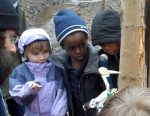
Net zoals dieren, spreken machines die interacteren met andere wezens ons allen op een bepaald niveau aan. Het werk van Ian Ingram heeft de capaciteit om vele wezens inclusief mensen van jong tot oud aan te spreken. Op het niveau van gebaar en speelse interactie verbinden deze machines zich tot onze meest fundamentele manieren van communicatie. Tijdens een informele sessie nodigen we kinderen van alle leeftijden uit om met de machines het park in te gaan om de vele wezens daar te ontmoeten.
Workshop Ian Ingram
Vrijdag 1 Juni, 15:00 – 18:00 uur
Ian Ingram werkt van 20 Mei t/m 3 Juni vrijwel dagelijks in het Amstelpark waar hij in contact is met zowel de parkbewoner als de parkbezoekers.
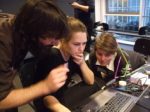
Het werk van Ian Ingram begint bij de observatie van lokale dieren en het verzamelen van materialen (zowel digitaal als fysiek) die gebruikt worden in de bouw van de robot’s mechatronics en waarnemingssystemen. Deelnemers werken tijdens deze workshop mee aan het observeren van gebaren en gedrag van dieren rondom het Glazen Huis en leren simpele mechanismen te bouwen die dier gebaren maken. Deze mechanismen kunnen Ian’s robot verder helpen ontwikkelen. De verzamelde observaties (op foto en video) zullen gebruikt worden als machine-learning trainingsdata om de robot specifieke lokale dieren te helpen herkennen. (Kraaien, konijnen, duiven, wormen and wie weet wat nog meer!)
Workshop Jip van Leeuwenstein
Vrijdag 29 juni
Jip van Leeuwenstein werkt vanaf 22 Juni in het Amstelpark aan zijn nieuwe robotische project.
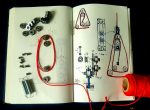
Aan het einde van zijn werkweek in het Amstelpark bespreekt Jip van Leeuwenstein in een workshop de serie robots waar hij aan werkt die fungeren in ecosystemen die door de menselijke activiteit uit balans zijn geraakt. Deelnemers werken mee aan het bouwproces en ontdekken in detail hoe Jip’s roofdier robots werken. We onderzoeken of het mogelijk is wezens te creëren die zelfredzaam zijn binnen een ecosysteemen of deze technologie daadwerkelijk toepasbaar is voor het in balans brengen van ecosystemen. Technische ervaring is niet nodig voor deelname.